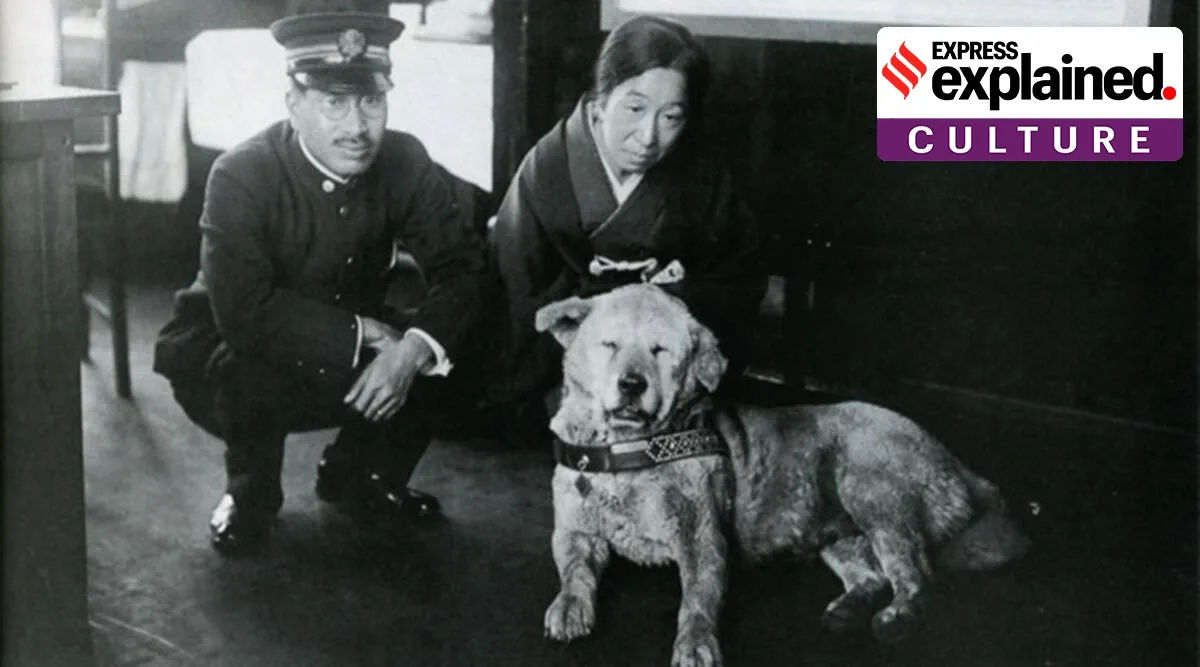At the busy Shibuya Station in Tokyo, Japan, finding a central place on a gigantic mural is possibly the world’s most famous Akita dog, Hachiko. Surrounded by 20 other dogs in the Ryutaro Kitahara-designed artwork made with ceramic pieces, Hachiko stands out and continues to be the crowd-puller. Considered one of the world’s most loyal dogs, who continued to wait for his master at a train station long after his death, Hachiko’s 100th birthday anniversary will be celebrated by Japan and the rest of the world in November this year. We look at his story and enduring legacy.
Who was Hachiko?

Born in Odate in Akita Prefecture, Japan, in November 1923, Hachiko was reportedly sold to Hidesaburo Ueno, an agricultural scientist at the University of Tokyo, for a then princely sum of 30 yen. The pure-bred Akita pup travelled the long journey on an express train to reach Ueno in Shibuya from his birth town. Named Hachi after the number eight, considered lucky in Japan, ‘ko’ was added later as an honorific by Ueno’s students. In the book Hachi: The Truth of The Life and Legend of the Most Famous Dog in Japan, the dog’s biographer Mayumi Itoh recalls how the feeble puppy was looked after by Ueno and his partner Yae till it regained strength.
Also in Explained | Europe’s most expensive artwork sold for $108 million: Who was Gustav Klimt, the artist behind it?
The endearing relationship Hachiko shared with his master
A graduate of the agriculture department at Tokyo Imperial University, Ueno joined the faculty of his alma mater and often took the train to work from the Shibuya station. His three dogs, including Hachiko, would see him off and then wait at the station for his return in the evening. On May 21, 1925, when Ueno died of a cerebral haemorrhage at work at the age of 53, Hachiko was less than two years old. Though he spent the following months with different families, eventually he began staying with Ueno’s gardener Kikusaburo Kobayashi, but every day at the time when Ueno would return from the university, Hachiko walked to the station in the hope of finding him.
How Hachiko became a national hero
While Hachiko’s station visits initially upset station employees and passengers, one of Ueno’s students, Hirokichi Saito, who was conducting research on Akita dogs, published numerous articles about his loyalty, including one in 1932 in ‘Asahi Shimbun’, a popular daily in Japan, which brought immediate attention onto Hachiko. Soon, the station began receiving donations and there were visitors to see the canine.
When Hachiko died in 1935 at the age of 11, due to cancer and a filariasis infection, his funeral was attended by hundreds, and Buddhist monks offered prayers for him.
Best of ExplainedWomen's reservation: Seeds of the idea under Rajiv Gandhi and Narasimha Rao govtsWho was Hardeep Singh Nijjar, the Khalistani separatist that Canada PM Trudeau says India may have got killedBima Sugam: Is it a ‘UPI moment’ for insurance sector, and how will it benefit customers?Click here for more
The canine in popular culture
Most Read 1Chandrayaan-3 mission: Dawn breaks on Moon, all eyes on lander, rover to wake up 2As Indo-Canadian relations sour, anxiety grips Indian students, residents who wish to settle in Canada 3Karan Johar says Sanjay Leela Bhansali did not call him after Rocky Aur Rani: ‘He’s never called me but…’ 4Gadar 2 box office collection day 40: Hit by Shah Rukh Khan’s Jawan onslaught, Sunny Deol movie ends BO run with Rs 45 lakh earning 5Shubh’s tour in India cancelled: Why is the Canada-based singer facing the music?
Hachiko was still alive when a bronze statue of him by artist Teru Ando was erected outside the Shibuya Station in Tokyo in 1934. While this was melted during World War II, Ando’s son Takeshi built a new statue to replace it in 1948, which still stands outside the station. Several other statues of Hachiko can be found across Japan, including one outside the Odate Station and another at the Akita Dog Museum in Odate. In March 2015, to commemorate the 80th anniversary of Hachiko’s demise, the Faculty of Agriculture at the University of Tokyo unveiled a bronze statue that depicts an excited Hachiko meeting his master Ueno.
Upon his demise, Hachiko’s fur was also preserved and his taxidermy is on display at the National Museum of Nature and Science in Tokyo.
Also ReadCurtains for old Parliament building: The Madhya Pradesh temple believed …Expert Weighs in | ‘Tagore’s vision for Santiniketan difficult to restore…Heard the ‘Makeba’ song viral on Instagram reels? Here’s the story of the…The science and history behind curly hair, and their changing perceptions…
While Hachiko’s story is narrated to school children in Japan as a lesson in loyalty, several books also recall his story and numerous movies, based on him, have been released, including the 2009 Richard Gere-starrer Hachi: A Dog’s Tale, and the 1987 Japanese drama film Hachikō Monogatari, directed by Seijirō Kōyama.


